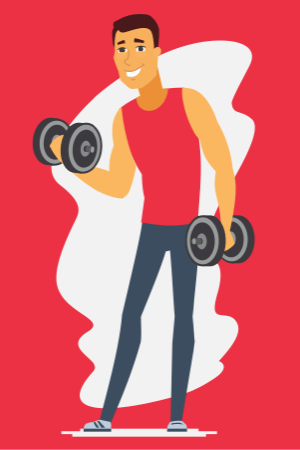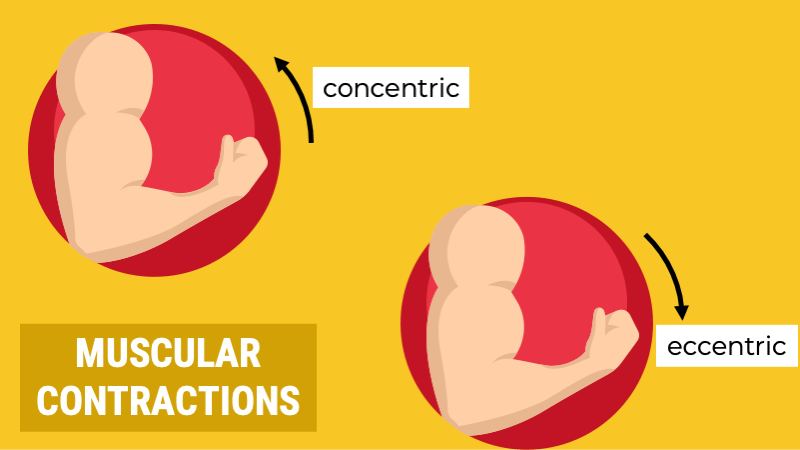Life can be full of little (and sometimes BIG) surprises. It's a fact of life that if you exercise, you're going to experience some delayed onset muscle soreness. By understanding a little bit more about it, you can reduce its occurrence and make your workouts, and recovery, a bit more comfortable.
More...
I remember the first BodyPump class I ever did. It was a fine spring Sunday morning. The weather was starting to improve after a typically cold Scottish winter. I headed off to the local leisure centre to try this new class I'd come across. When I got home, I felt great - I thoroughly enjoyed the workout and the music.

Until the following morning that was. I couldn't believe how stiff and sore my muscles had become! It wasn't that I was unfit, or hadn't worked my muscles before. It's just they weren't used to that type of workout.
Acute Muscle Soreness
Although people talk about muscle soreness as a whole, there are two types of muscle soreness. These are, in fact, quite distinct from each other.
The most familiar is the temporary soreness that we experience during and immediately after intense training.
This is the tiring, burning soreness that you might experience as squeeze out those last few reps on the leg extension machine. Or as you hit the last peak in a BodyAttack class.
Known as acute soreness, it's caused by an accumulation of lactic acid. Lactic acid is a by-product of high-intensity exercise. When you train very intensely or maximally, there's usually not enough oxygen to create the large amounts of energy you require.
Anaerobic glycolysis
For short periods, you can produce energy from stored muscle carbohydrates without oxygen present. This process is known as anaerobic glycolysis.
However, the drawback is that by supplying energy via this pathway results in the production of lactic acid.
As the lactic acids builds up in muscle tissue, so does the sense of burning and fatigue. These effects are only temporary though.
As soon as you ease up, your body metabolites the lactic acid and it disappears from your muscles.
Depending on your fitness level, these sensations of acute soreness usually sink in after one or two minutes. After a brief rest period, you might able to repeat the activity shortly afterwards. Like, for example, during interval training or during a workout of multiple sets.
Delayed Onset Muscle Soreness (DOMS)
The other kind of exercise-related muscle soreness is known as 'Delayed Onset Muscle Soreness.'
It's a bit of a mouthful, so it's also known as 'DOMS' for short.
DOMS is experienced as soreness, stiffness and general discomfort and appears 24-48 hours after exercising. It can last anything up to 10 days. As well as local muscular stiffness and tenderness, there may be local swelling present and a degree of pain. This pain can be anything from a mild ache to severe discomfort.
The peak time of soreness depends on several factors, but almost always occurs between 24 and 72 hours after exercising. This is the sort of soreness you may have experienced after an unusually intense workout. Likewise, when trying out a new activity for the first time or maybe after returning to your normal training regime after a long break.
What causes DOMS?
Although we've known about DOMS for decades, we don't fully understand the exact causes.
It's not related to lactate.
Almost all of the lactate produced in the muscles degrades within an hour after exercise. Conversely, DOMS doesn't even begin to appear till a day after training.
Research shows there's a strong correlation between eccentric type exercise and DOMS.
One theory is that eccentric muscle contractions may damage the basic ultra-structure of the muscle cell. The result is you pain receptors become active, causing the sensation of DOMS.
However, despite all the theories, there's still no definitive explanation of DOMS as yet. But it's not bad news.
Even severe delayed onset muscle soreness is not damaging in the long term. We also know that the body readily adapts.
A new or unusual exercise that produces DOMS the first time around will not produce the same soreness provided you repeat it reasonably regularly.
The research suggests that one bout of eccentric DOMS-inducing exercise appears to provide protection from excessive soreness from a subsequent bout for up to about 5-6 weeks in untrained or novice individuals.
Concentric or Eccentric? The different types of muscle contraction
Concentric - this is where the muscle fibres shorten as force is being exerted. For example, during a biceps curl exercise, the biceps fibres would be contracting concentrically and shortening as the hand was brought up to the shoulder. The muscles shorten under load.

Eccentric (associated with DOMS) is the opposite, where the muscle fibres lengthen under force.
In the example above the biceps contract eccentrically and lengthen as the hand holding the dumbbell slowly lowers away from the shoulder back to its starting point.
Another example occurs in running when the foot hits the ground and the quadriceps muscle fibres lengthen while applying force to brake the downward motion of the leg.
Can you prevent Delayed Onset Muscle Soreness?
If you've ever suffered from severe DOMS, you'll know just how uncomfortable it can be. Knowing that there's no permanent harm done is little consolation when you can't even raise your arms enough to slip on a T-shirt 2 days after that upper body workout!
So what, if anything, can we do to reduce the occurrence and intensity of delayed onset muscle soreness?
There's no magic cure, but the key seems to lie in a gradual progression. Particularly where eccentric muscle contractions play a major role in your chosen activity.
For example, if you're new to running, you shouldn't try and bash out a course that involves lots of downhill running, or try and run it quickly. That's because downhill running involves a more pronounced eccentric contraction of the quadriceps as they perform a kind of braking action to steady your descent.
READ ALSO: Running Plan for the Complete Beginner
Likewise, faster-paced running requires more lift from the ground, which in turn requires more of an eccentric contraction with each foot-strike. There's also some evidence that a thorough warm-up involving concentric activity may better prepare the muscles for the stress caused by eccentric type exercise.
Warming up before exercise may help
For example, 10 minutes of steady cycling (a concentric-type exercise) performed before a run increases muscle temperature, thereby reducing muscle and connective tissue viscosity, leading to increased muscle elasticity and higher resistance of muscle tissue to tearing during eccentric work.
It's also worth stressing the importance of continuing to include eccentric type exercise in any training program.
Research demonstrates performing repeated bouts of eccentric exercise within one to six weeks reduces DOMS and muscle damage. Consequently, they'll allow you to recover your strength and range of movement faster.
If you experience intense soreness after a weight training workout, for example, repeating that workout one or more times within the next 5 or 6 weeks will soon produce little or no DOMS.
However, leave it more than 6 weeks before you train again, and the soreness that results will be just as severe as that from the first session
In summary then;
- Build up your training slowly and progressively, especially those activities that involve eccentric type contractions,
- Try to avoid a sudden increase in intensity
- Take care when introducing new activities or exercises into your routine, or returning to an existing activity after an extended break.
- Warm-up thoroughly beforehand - preferably using some concentric type movements.
- Remember that repeating DOMS inducing exercise regularly will afford you significant protection from future soreness!
Easing the symptoms of Delayed Onset Muscle Soreness
Finally, if you have overdone it, is there anything you can do to help alleviate that post-workout soreness other than wait for it to subside?
There are certainly lots of folk remedies out there, but the evidence is less convincing.
Studies examining the effects of remedial massage on DOMS are inconclusive, although some indicate that massage may give partial relief.
However, when it comes to other strategies such as vitamin and mineral supplementation, hyperbolic oxygen therapy, homoeopathic preparations, anti-inflammatory drugs, or ointments and creams, there's no scientific evidence that they offer any benefits at all.
When it comes to DOMS, prevention really is better than cure.
